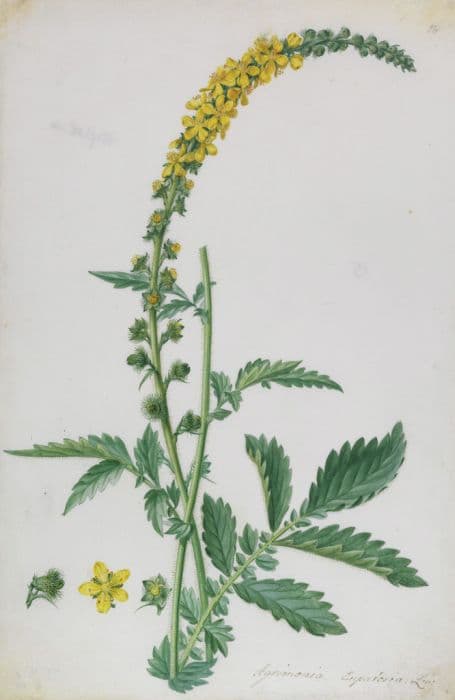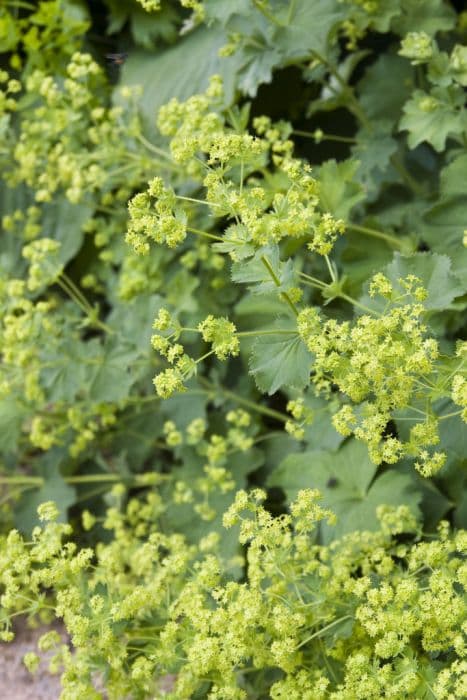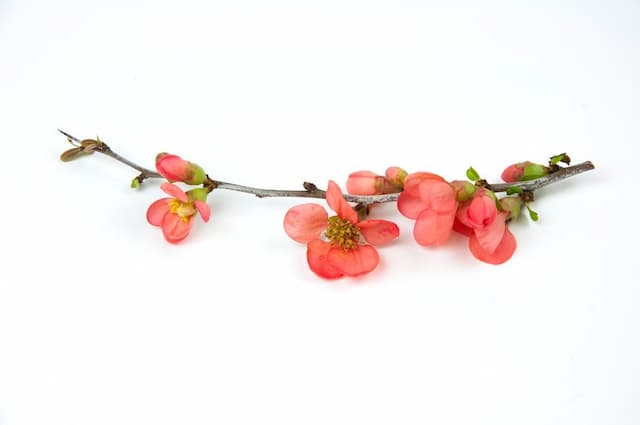Ninebark Physocarpus opulifolius Lady in Red = 'Tuilad' (PBR)
![ninebark [Lady in Red]](/_next/image?url=https%3A%2F%2Fplants-admin.emdemapps.com%2Fimages%2Fplants%2F%2Fimages%2F604b5f70d07ed.png&w=3840&q=75)
ABOUT
The plant 'Lady in Red', commonly known as the Ninebark, is distinguished by its striking foliage and overall ornamental appeal. The leaves of Ninebark 'Lady in Red' are particularly noteworthy for their deep burgundy-red color, which creates a bold contrast in the garden throughout the season. As the plant progresses from spring to fall, the intensity of the leaf color can vary, often deepening to a rich purple-red. In addition to its colorful foliage, the Ninebark 'Lady in Red' produces clusters of small, white to pinkish flowers in the spring. These dainty flowers are appealing to pollinators like bees and butterflies, adding to the plant's decorative value. After the flowering period, the plant produces small red fruits that provide additional visual interest and can attract birds to the garden. The overall form of the Ninebark 'Lady in Red' is one of relaxed and arching grace, with stems that exhibit exfoliating bark adding textural detail to its appearance. This exfoliating bark reveals layers of reddish to light brown underbark, creating an appealing winter silhouette. The plant's branches and stems create a beautiful, rounded, and slightly fountain-like shape that enhances its aesthetic charm. Overall, the Ninebark 'Lady in Red' is recognized for its ornamental features which include the striking red foliage, spring blossoms, exfoliating bark, and overall pleasing shape. These characteristics make it a favored choice for adding color and texture to gardens and landscapes.
About this plant
 Names
NamesSynonyms
Ninebark, Eastern Ninebark, Atlantic Ninebark, Red Ninebark.
Common names
Physocarpus opulifolius 'Tuilad' Lady in Red (PBR).
 Toxicity
ToxicityTo humans
Ninebark is not commonly listed as a toxic plant to humans. There is little evidence suggesting that ingesting parts of the ninebark plant can result in poisoning. As with many plants, it is likely not meant for consumption, and eating plant material may cause gastrointestinal discomfort or other non-specific symptoms due to the presence of plant compounds not intended for human digestion. If symptoms do appear after ingestion, it is advisable to seek medical advice.
To pets
Ninebark is also not known to be toxic to pets. There is no widespread documentation of poisoning in pets such as dogs and cats after ingesting this plant. However, ingestion of any plant material can potentially cause mild stomach upset in some animals. If a pet shows signs of distress after consuming parts of the ninebark plant, it is recommended to consult with a veterinarian.
 Characteristics
CharacteristicsLife cycle
Perennials
Foliage type
Deciduous
Color of leaves
Red
Flower color
Pink
Height
5-6 feet (1.5-1.8 meters)
Spread
5-6 feet (1.5-1.8 meters)
Plant type
Shrub
Hardiness zones
2-7
Native area
North America
Benefits
 General Benefits
General Benefits- Attractive Foliage – The 'Ninebark' features burgundy-red leaves that provide a striking color contrast in the garden.
- Seasonal Interest – Offers year-round interest with spring flowers, summer foliage, fall color, and exfoliating winter bark.
- Low Maintenance – Requires minimal care once established, making it ideal for gardeners of all skill levels.
- Durable – 'Ninebark' is tolerant of a variety of soil types, including clay, and can withstand some drought conditions once mature.
- Pest and Disease Resistant – Generally resistant to common garden pests and diseases, reducing the need for chemical treatments.
- Wildlife Support – Provides nectar for pollinators with its clusters of white to pink flowers, and the seeds can attract birds.
- Fast Growing – Can quickly reach its mature size, which is beneficial for creating landscapes or filling in garden spaces efficiently.
- Versatile Usage – Works well as a specimen plant, in mass plantings, or as part of mixed borders, offering flexibility in garden design.
- Adaptable – Can be pruned and shaped to fit various garden styles, from naturalistic to more formal landscapes.
 Medical Properties
Medical PropertiesThis plant is not used for medical purposes.
 Air-purifying Qualities
Air-purifying QualitiesThis plant is not specifically known for air purifying qualities.
 Other Uses
Other Uses- Instrument Crafting: The dense wood of Eastern Ninebark can be utilized by artisans in crafting small musical instruments such as flutes or decorative wooden percussion instruments, providing a unique appearance due to its bark texture.
- Photographic Backdrop: The rich coloration of Eastern Ninebark's foliage and peeling bark can serve as a beautiful backdrop for photography, offering a naturally contrasting and textured background for outdoor portraits or macro photography.
- Printmaking: The leaves and bark textures of Eastern Ninebark could be incorporated into printmaking processes, such as nature printing or eco-dyeing, to create unique patterns on paper or fabric.
- Fish Tank Decoration: After appropriate treatment to ensure it's safe for aquatic life, small branches of Eastern Ninebark may be used to decorate fish tanks, providing natural-looking hideaways for fish.
- Artisanal Charcoal: Wood from Eastern Ninebark can be transformed into a high-quality charcoal for drawing or artistic use, offering a deep rich black with potentially unique undertones.
- Furniture Accents: The textured bark and hardwood of Eastern Ninebark may be used as accent pieces in the design of rustic furniture, such as inlays or decorative trim.
- Natural Fencing: Live or harvested Eastern Ninebark shrubs can provide a natural fence or visual barrier in landscaping, creating privacy with their dense growth.
- Educational Tool: This plant can be used in educational settings, such as schools or nature centers, for lessons on native plant species, pruning techniques, or discussions on biodiversity.
- Craft Materials: Dried sections of Eastern Ninebark's peeling bark can be a unique material for arts and crafts, offering texture and natural patterns for collage or mixed media projects.
- Support for Climbing Plants: The sturdy branches of the Eastern Ninebark can act as a support for climbing plants in gardens, creating a living trellis that changes appearance with the seasons.
Interesting Facts
 Feng Shui
Feng ShuiNinebark is not used in Feng Shui practice.
 Zodiac Sign Compitability
Zodiac Sign CompitabilityNinebark is not used in astrology practice.
 Plant Symbolism
Plant Symbolism- Transformation: The 'Lady in Red' variety of Ninebark (Physocarpus opulifolius) showcases vibrant foliage that changes colors throughout the seasons, symbolizing the idea of transformation and adaptability in life.
- Mystery: With its dark red leaves, the Ninebark's 'Lady in Red' brings a sense of mystery and the unknown, representing the hidden depths and the unexplored aspects of our lives.
- Resilience: Ninebark is known for its hardiness and ability to thrive in various conditions. 'Lady in Red', with its robust nature, is a symbol of resilience and the ability to withstand adversity.
- Protection: The exfoliating bark of Ninebark offers protection to the plant, much like the protective measures we take in our personal lives, symbolizing safety and shelter.
 Water
WaterThe Ninebark 'Lady in Red' prefers consistent moisture, but it's also important not to overwater. Water the plant deeply once a week, providing about 1 to 1.5 inches of water each time, which amounts to about 0.6 gallons for a medium-sized shrub. During hot, dry periods, increase watering frequency to twice a week. Make sure the soil is well-draining to prevent waterlogging. Adjust the amount of water in the cooler months when the plant is dormant, reducing watering to only when the topsoil feels dry to the touch.
 Light
LightNinebark 'Lady in Red' thrives in full sun to partial shade. The best spot for this plant is one where it can receive at least six hours of sunlight a day. It can tolerate some shade, but its foliage color and flowering are most vibrant with ample sunlight.
 Temperature
TemperatureNinebark 'Lady in Red' is tolerant of a wide range of temperatures and can survive in conditions as low as -30°F and as high as 100°F. The ideal temperature range for this plant is between 60°F to 80°F. Being a hardy shrub, it can tolerate the cold winters and hot summers common in many temperate regions.
 Pruning
PruningNinebark 'Lady in Red' should be pruned for shape and size as well as to remove any dead or damaged wood. This is best done in late winter or early spring before new growth starts. Pruning can also be done after the plant flowers to encourage a second bloom and to rejuvenate older plants, which can be pruned more severely every few years.
 Cleaning
CleaningAs needed
 Soil
SoilNinebark 'Lady in Red' thrives in a soil mix with good drainage, consisting of garden loam, peat, and a component like perlite to enhance aeration. Ideal soil pH for Ninebark is slightly acidic to neutral, ranging from 6.0 to 7.0.
 Repotting
RepottingNinebark 'Lady in Red' is a shrub that typically does not require frequent repotting, especially when planted in the ground. Container-grown plants may need repotting every 2-3 years to refresh the soil.
 Humidity & Misting
Humidity & MistingNinebark 'Lady in Red' is adaptable to a range of humidity conditions but does best in average outdoor humidity levels, without the need for any special humidity adjustments.
 Suitable locations
Suitable locationsIndoor
Plant Ninebark 'Lady in Red' in a large pot and place in bright light.
Outdoor
Plant in well-draining soil under full sun to partial shade.
Hardiness zone
3-7 USDA
 Life cycle
Life cycleThe Ninebark 'Lady in Red' begins its life as a dormant seed that requires stratification before germination. Once planted and exposed to appropriate conditions, it germinates and develops into a seedling, typically emerging with its first pair of true leaves after the cotyledons. As a young plant, it vigorously grows, developing a woody stem and a bushy structure, progressing to a mature shrub with deep red to burgundy leaves and exfoliating bark that reveals multiple layers of reddish to light brown inner bark. During spring to early summer, Ninebark 'Lady in Red' enters its reproductive phase, producing clusters of small, pinkish-white flowers which are attractive to pollinators. Following pollination, it forms small red fruits (follicles) that release seeds, completing its reproductive cycle. Over the years, the shrub can experience cycles of growth, flowering, and dormancy, often requiring occasional pruning to maintain its size and shape.
 Propogation
PropogationPropogation time
Spring-Early Summer
Propogation: The Ninebark 'Lady in Red', commonly referred to as Physocarpus opulifolius 'Tuilad', is generally propagated through softwood cuttings taken in late spring to early summer. Collect cuttings of about 6 inches (15 centimeters) long from healthy, new growth. The bottom cut should be just below a leaf node. Remove the leaves from the lower third of the cutting to expose the nodes and dip the cut end into a rooting hormone powder to enhance root development. Afterward, insert the cutting into a pot filled with a mix of half peat and half perlite or a similar well-draining rooting medium. Ensure the pot is kept moist and in a warm environment with indirect light. Rooting usually occurs in 4-6 weeks, after which the rooted cuttings can be transplanted into individual pots or outdoors, depending on the climate and season.









